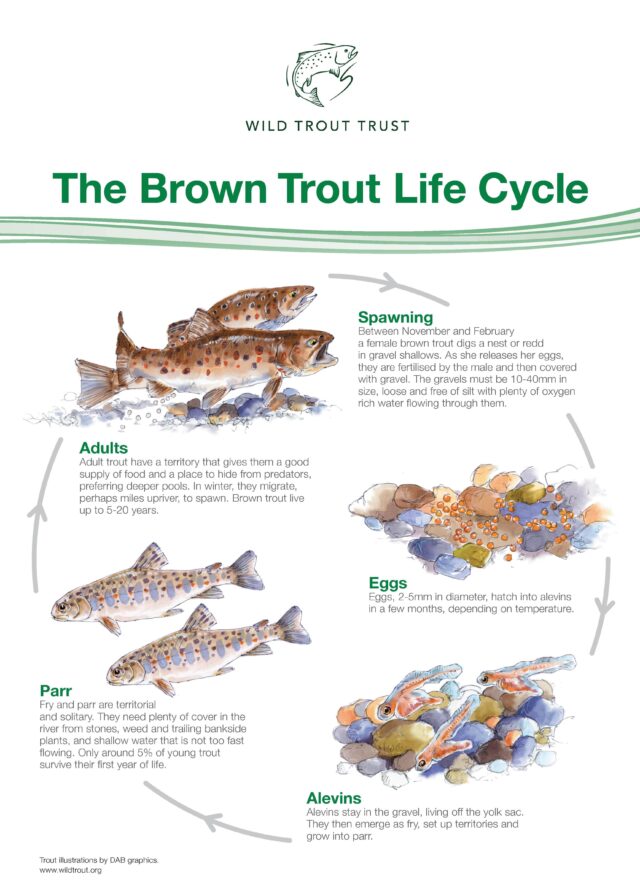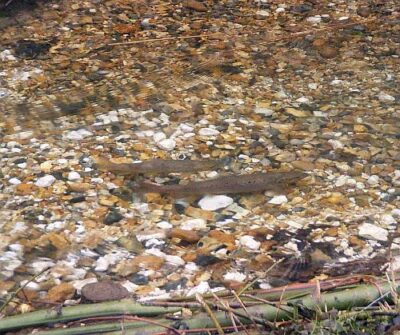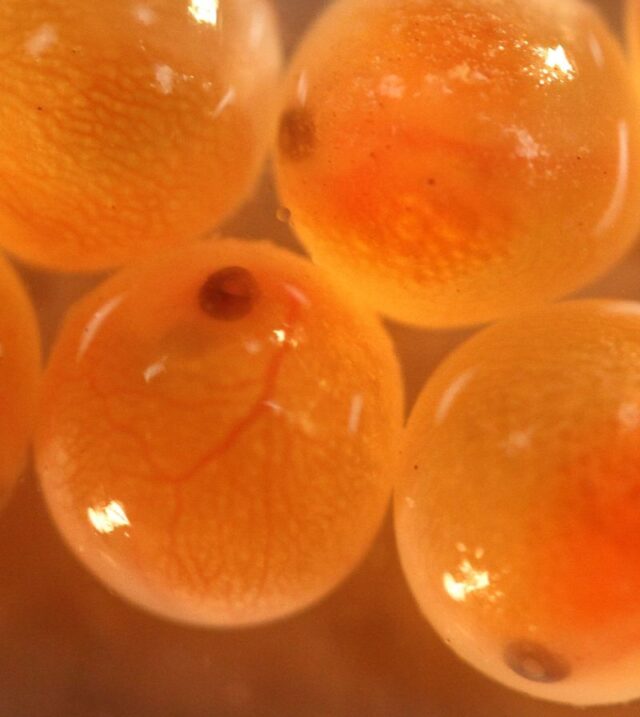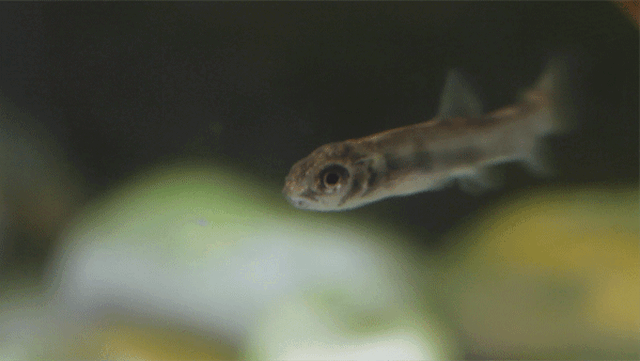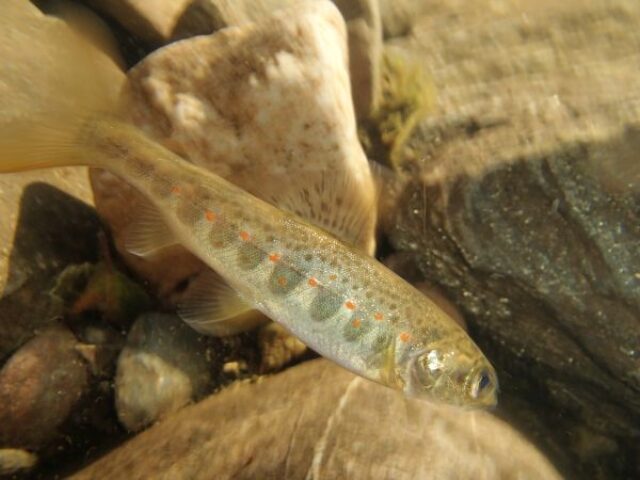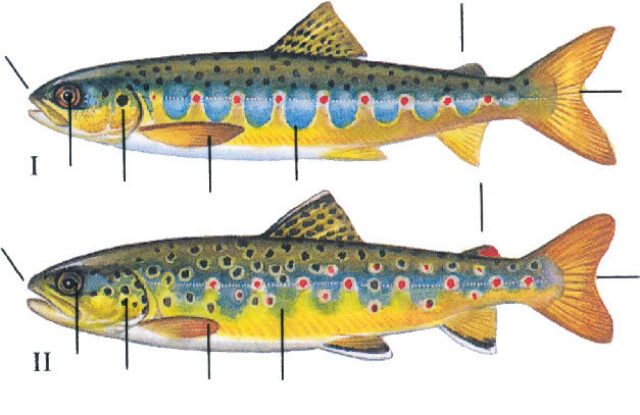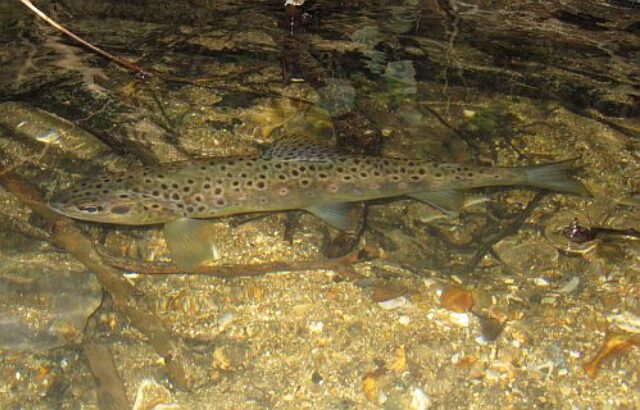The diagram below summarises the main trout lifecycle stages.
For more detail on each stage, see the relevant section in the text and photographs below.
Also check out this video of a talk by WTT Director Shaun Leonard where he describes the lifecycle of both resident brown trout and sea trout in some detail. The section on trout lifecycle starts at 4.49. and runs to 12.50 minutes.
